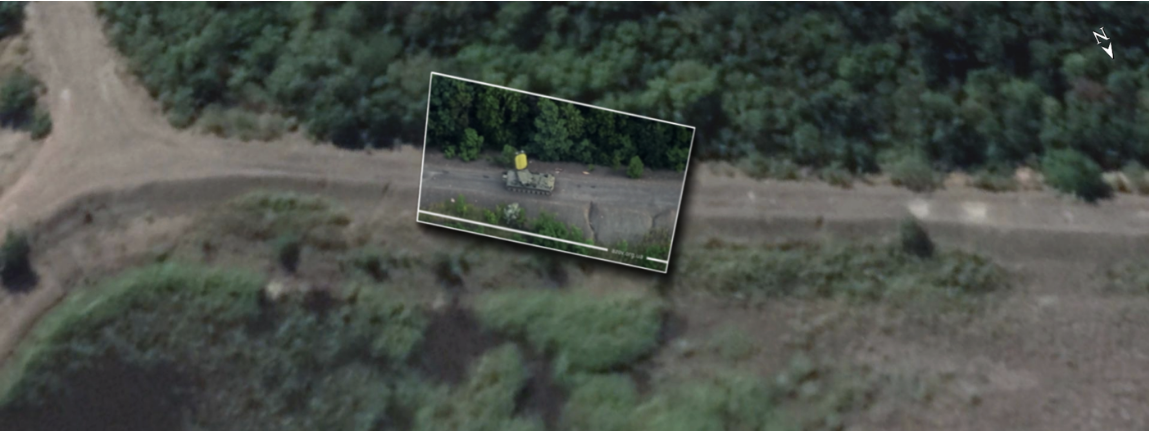Russian “Zoopark-1” Counter-Battery Radar Takes Fire in Ukraine
Ukrainian National Guard unit documents Russian military equipment near Horlivka, Ukraine
Russian “Zoopark-1” Counter-Battery Radar Takes Fire in Ukraine

BANNER: (Source: @Michael1Sheldon/DFRLab via Azov regiment, inset; Google Earth, background)
In a recent video, the Ukrainian National Guard unit “Azov” showed a Russian Federation “Zoopark-1” taking fire in the Svitlodarsk bulge area near Horlivka, Ukraine. The Zoopark-1 is a counter-battery radar, meaning that it can detect and direct fire against adversarial mortar and artillery assets active within a radius of several kilometers. The incident reportedly took place on June 23, 2019.
This capability has become highly valuable in the past several years. As the conflict has stalled, harassing artillery fire on fixed positions has become a common occurrence for both sides.
The Zoopark-1 would be able to mitigate for this phenomenon to some degree when working with separatist artillery assets to provide return fire against Ukrainian positions. This is a capability that Russia-backed separatist forces would not have had if not for the direct involvement of the Russian Federation.
In the video, a total of three artillery impacts are shown around the Zoopark. The video was heavily edited, and it was not clear in which sequence the impacts took place. According to Azov, they targeted the Zoopark-1 with 122 and 152mm artillery shells. Due to their range, the artillery pieces that these shells originated from would have been in violation of the second Minsk Agreement. Two artillery shells impacted in the forest about 25 meters from the vehicle, while a third impacted closer to the Zoopark, but on a slope further down. Because of these factors, the bombardment shown in the video likely did not damage the Zoopark.
Twitter user @askai707 successfully geolocated the Zoopark-1 to a location west of Horlivka, just a few kilometers south of Ukrainian positions in the formerly gray-zone village of Travneve. According to Almaz-Antey, the company that produces the Zoopark-1, the system has a range of 22 and 20 kilometers for providing corrections for mortar and artillery fire respectively. Given this range, it is not clear exactly why the Zoopark-1 was so close to the frontline. Most Ukrainian artillery pieces would be approaching their maximum range to require the Zoopark-1 to be that close to the frontline. It is possible that the vehicle was moved close for either inconspicuous transport or to gain a better resolution of Ukrainian firing positions.
A new position appeared at an old warehouse compound in non-government controlled territory in summer 2018 near where the Zoopark-1 was spotted, but it was not clear if the Zoopark-1 would be stored there. The position was part of a larger complex, but only two freshly dug trenches and an adjacent building appear to be active.
As pointed out by Askai, a Zoopark-1 was first reported as being in or near Ukraine in November 2014, when pro-separatist social media personality Maryana Naumova posted a picture of the system accompanied by its 1I30 support vehicle. The photo was posted in an album titled “Donbas,” suggesting that it was taken in eastern Ukraine.

The support vehicle displayed Russian army markings, which were more common in 2014. By 2015, military materiel in the armed forces of the Russian Federation would commonly have separatist markings or no markings at all.
The Zoopark-1 system is rarely spotted in Ukraine, and it is not clear if it was present throughout the entire conflict or made a return to the front lines only recently.
The Azov Battalion (part of the 18th National Guard Regiment of the Ukrainian Ministry of Interior Affairs) is prohibited from receiving aid from the United States government due to its far-right political leanings.
Follow along for more in-depth analysis from our #DigitalSherlocks.


